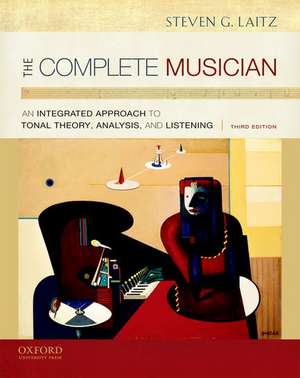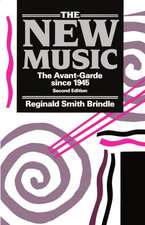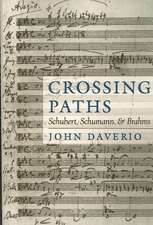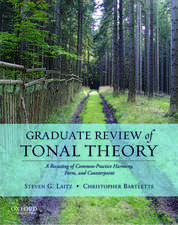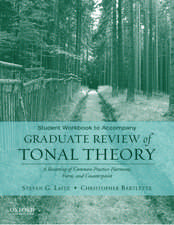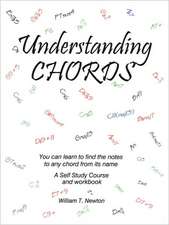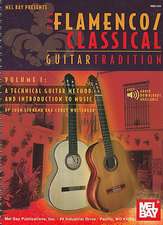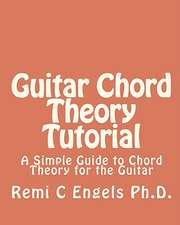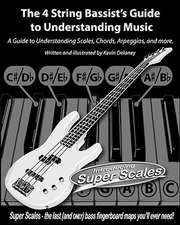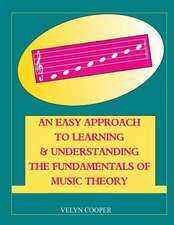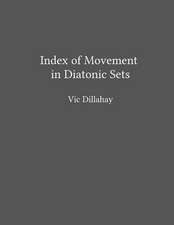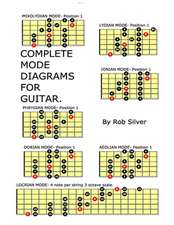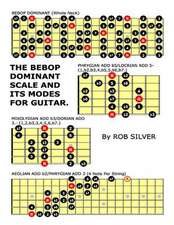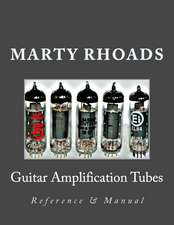The Complete Musician: An Integrated Approach to Tonal Theory, Analysis, and Listening
Autor Steven G. Laitzen Limba Engleză Hardback – 8 iun 2011
DISTINCTIVE FEATURES
* Presents an outstanding quality, quantity, and diversity of exercises geared toward real music and real music situations
* Explores not only standard four-voice harmony, but also other musical domains including melody, counterpoint, and a multitude of textures; the result is a text with applicability and relevance to all musicians
* Includes almost 4,500 musical examples from the common-practice repertoire in the text and workbooks, more than 90 percent of which are on the CDs included with the text and workbooks--nearly twenty hours of music on MP3 files (all music is performed, recorded, and engineered at Eastman)
| Toate formatele și edițiile | Preț | Express |
|---|---|---|
| Paperback (1) | 879.36 lei 10-16 zile | |
| Oxford University Press – 14 ian 2016 | 879.36 lei 10-16 zile | |
| Hardback (1) | 458.86 lei 40-51 zile | |
| Oxford University Press – 8 iun 2011 | 458.86 lei 40-51 zile |
Preț: 458.86 lei
Preț vechi: 498.71 lei
-8% Nou
Puncte Express: 688
Preț estimativ în valută:
87.83€ • 95.44$ • 73.83£
87.83€ • 95.44$ • 73.83£
Carte tipărită la comandă
Livrare economică 18-29 aprilie
Preluare comenzi: 021 569.72.76
Specificații
ISBN-13: 9780199742783
ISBN-10: 0199742782
Pagini: 896
Dimensiuni: 211 x 259 x 40 mm
Greutate: 1.77 kg
Ediția:Third Edition
Editura: Oxford University Press
Colecția OUP USA
Locul publicării:New York, United States
ISBN-10: 0199742782
Pagini: 896
Dimensiuni: 211 x 259 x 40 mm
Greutate: 1.77 kg
Ediția:Third Edition
Editura: Oxford University Press
Colecția OUP USA
Locul publicării:New York, United States
Descriere
Beginning with music fundamentals, this text covers all the topics necessary for a thorough understanding of undergraduate music theory by focusing on music in context. The text links each of the tasks that comprise a tonal theory curriculum, explicitly connecting written theory (writing and analysis), skills (singing, playing, and dictation), and music-making outside the theory class.DISTINCTIVE FEATURES* Presents an outstanding quality, quantity, and diversity of exercises geared toward real music and real music situations* Explores not only standard four-voice harmony, but also other musical domains including melody, counterpoint, and a multitude of textures; the result is a text with applicability and relevance to all musicians* Includes almost 4,500 musical examples from the common-practice repertoire in the text and workbooks, more than 90 percent of which are on the CDs included with the text and workbooks—nearly twenty hours of music on MP3 files (all music is performed, recorded, and engineered at Eastman)NEW TO THIS EDITION* Revised with beginning students in mind, this edition contains more basic exercises as well as solutions to selected exercises in the text. Longer and more difficult exercises have been moved to the workbooks. * Streamlined and reorganized with fewer chapters (31, down from 37), the text presents the most commonly taught topics in sequence and moves less-common topics—such as invertible counterpoint, compound melody, and motive (covered in chapters 15, 16, and 23 of the previous edition)—to the appendices, where instructors may access them as their individual curriculum permits, or omit them altogether.* This edition offers a new presentation of fundamentals: the first three chapters provide a review and synthesis for students with experience in music fundamentals, and a 75-page appendix introduces key concepts for students with little or no experience. This allows instructors to choose the pacing that best suits their class and individual students. * Numerous musical examples include guiding annotations, with textural and structural reductions of more complex examples.* This edition presents more than 250 new literature excerpts and complete works for analysis and dictation, including new instrumental combinations.* New appendices offer further support: Appendix 5 covers terms and abbreviations used in the text and Appendix 6 includes selected answers to exercises in the text.SUPPORT PACKAGE* The new Companion Website (www.oup.com/us/laitz) provides instructor and student resources that include supplementary drill exercises. * The Instructor's Manual provides solutions to all of the dictation exercises, sample solutions for more than 250 writing (e.g., figured bass and melody harmonization) and analytical exercises, supplementary examples, exercises, and teaching guidelines that detail effective strategies for each chapter.* The two workbooks have been significantly reorganized: Workbook 1 is now dedicated to written and analytical activities, including figured bass, melody harmonization, model composition, and analysis. Workbook 2 covers musicianship skills. Exercises within each chapter of Workbook 2 are organized by activity type: singing arpeggiations of the chord being studied, then within a tune from the literature; two-part singing; dictation; keyboard;then instrumental application.
Notă biografică
Steven G. Laitz is Associate Professor of Music Theory at the Eastman School of Music at the University of Rochester. He is also an Affiliate Faculty Member in the Chamber Music Department at Eastman. Dr. Laitz is the current editor of the Journal of Music Theory Pedagogy.
Recenzii
The best book on the market. It has a superior balance of basic and complex concepts, terms, exercises, and examples." - Peter Susser, Columbia University
I love teaching out of The Complete Musician." - Don Traut, University of Arizona
The Complete Musician provides a more holistic approach to theory than other texts. This text will absolutely help students' performing abilities and how they approach and understand music." - Alex Nohai-Seaman, Suffolk County Community College
This text is comprehensive, extremely thorough, and sophisticated." - Jeffrey Loeffert, Oklahoma State University
I love teaching out of The Complete Musician." - Don Traut, University of Arizona
The Complete Musician provides a more holistic approach to theory than other texts. This text will absolutely help students' performing abilities and how they approach and understand music." - Alex Nohai-Seaman, Suffolk County Community College
This text is comprehensive, extremely thorough, and sophisticated." - Jeffrey Loeffert, Oklahoma State University
